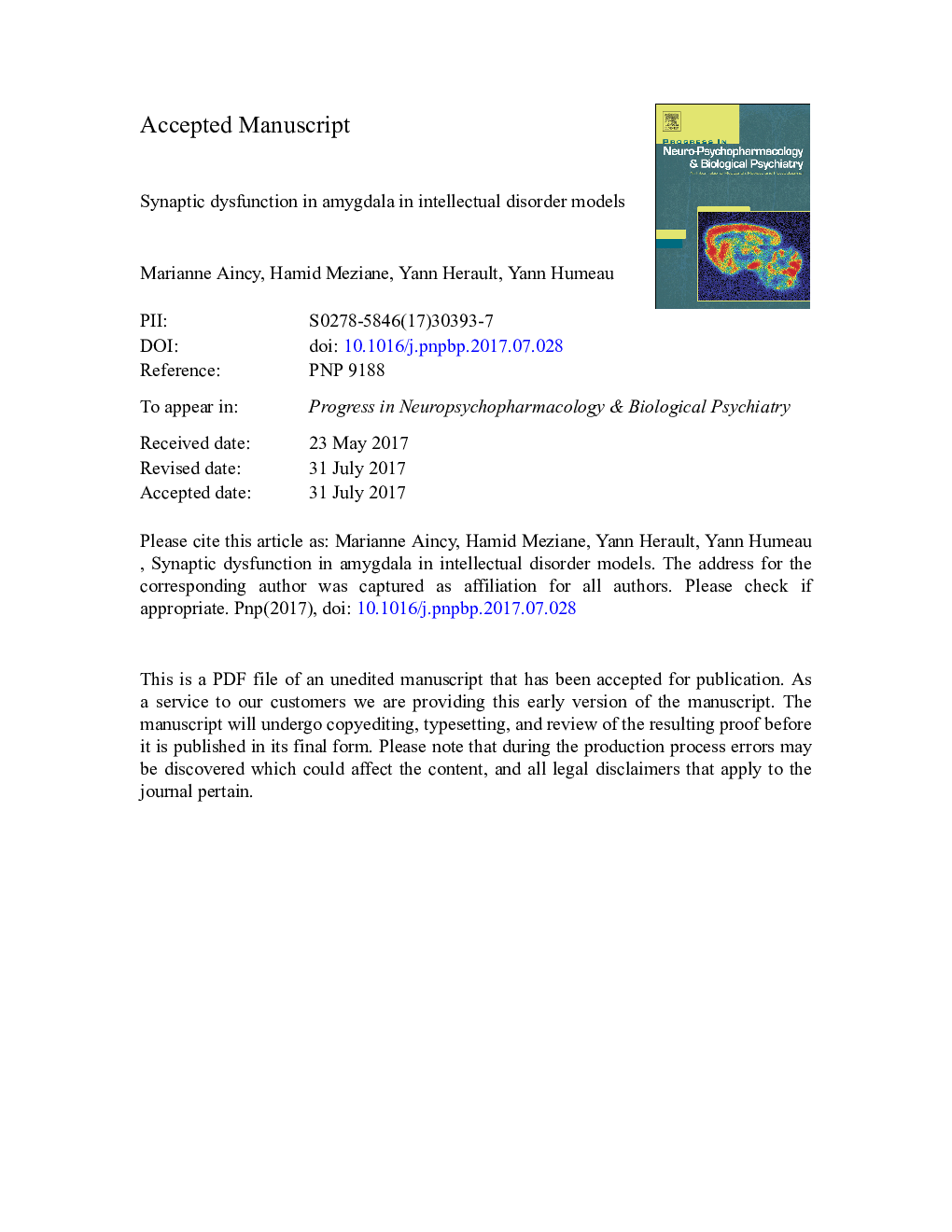| کد مقاله | کد نشریه | سال انتشار | مقاله انگلیسی | نسخه تمام متن |
|---|---|---|---|---|
| 8537275 | 1561009 | 2018 | 21 صفحه PDF | دانلود رایگان |
عنوان انگلیسی مقاله ISI
Synaptic dysfunction in amygdala in intellectual disorder models
ترجمه فارسی عنوان
اختلالات سیناپتیس در آمیگدال در مدل های اختلال فکری
دانلود مقاله + سفارش ترجمه
دانلود مقاله ISI انگلیسی
رایگان برای ایرانیان
موضوعات مرتبط
علوم زیستی و بیوفناوری
علم عصب شناسی
روانپزشکی بیولوژیکی
چکیده انگلیسی
The amygdala is a part of the limbic circuit that has been extensively studied in terms of synaptic connectivity, plasticity and cellular organization since decades (Ehrlich et al., 2009; Ledoux, 2000; Maren, 2001). Amygdala sub-nuclei, including lateral, basolateral and central amygdala appear now as “hubs” providing in parallel and in series neuronal processing enabling the animal to elicit freezing or escaping behavior in response to external threats. In rodents, these behaviors are easily observed and quantified following associative fear conditioning. Thus, studies on amygdala circuit in association with threat/fear behavior became very popular in laboratories and are often used among other behavioral tests to evaluate learning abilities of mouse models for various neuropsychiatric conditions including genetically encoded intellectual disabilities (ID). Yet, more than 100 human X-linked genes - and several hundreds of autosomal genes - have been associated with ID in humans. These mutations introduced in mice can generate social deficits, anxiety dysregulations and fear learning impairments (McNaughton et al., 2008; Houbaert et al., 2013; Jayachandran et al., 2014; Zhang et al., 2015). Noteworthy, a significant proportion of the coded ID gene products are synaptic proteins. It is postulated that the loss of function of these proteins could destabilize neuronal circuits by global changes of the balance between inhibitory and excitatory drives onto neurons. However, whereas amygdala related behavioral deficits are commonly observed in ID models, the role of most of these ID-genes in synaptic function and plasticity in the amygdala are only sparsely studied. We will here discuss some of the concepts that emerged from amygdala-targeted studies examining the role of syndromic and non-syndromic ID genes in fear-related behaviors and/or synaptic function. Along describing these cases, we will discuss how synaptic deficits observed in amygdala circuits could impact memory formation and expression of conditioned fear.
ناشر
Database: Elsevier - ScienceDirect (ساینس دایرکت)
Journal: Progress in Neuro-Psychopharmacology and Biological Psychiatry - Volume 84, Part B, 8 June 2018, Pages 392-397
Journal: Progress in Neuro-Psychopharmacology and Biological Psychiatry - Volume 84, Part B, 8 June 2018, Pages 392-397
نویسندگان
Marianne Aincy, Hamid Meziane, Yann Herault, Yann Humeau,
